Experienced fundraisers know how important the year-end giving season can be to their development efforts. Because the calendar year-end provides a natural deadline for donors to assess their financial situation for tax purposes, the number of regular and special gifts tends to increase during the final months of the year.
Before the busy fall giving season gets into full swing, take the time to consider the following facts and fallacies about year-end giving that could help make your gift development efforts more successful.
Fact – While donors often fund year-end gifts with cash, you should also expect a significant number of gifts in the form of non-cash assets.
Though most donors will choose to give cash or write a check for their gifts, others who own non-cash assets such as appreciated securities will benefit from learning about effective strategies for giving these assets. Inform them of the multiple tax savings available to them when they use appreciated assets to fulfill their charitable goals. See page 4 for more information about who makes gifts of non-cash property—and how much they give.
Fallacy – Donors who are subject to the alternative minimum tax cannot benefit from the charitable income tax deduction.
Many are under the mistaken impression that charitable gifts provide no tax benefits for persons who find themselves subject to the alternative minimum tax.
While the benefits of many deductions and adjustments are lost for alternative minimum tax purposes, donors will be glad to know that charitable gifts may be deducted for both regular and alternative minimum tax purposes.
Be sure your donors and their advisors understand that charitable gifts can reduce both their regular and alternative tax liability.
Fact – You can motivate immediate year-end gifts and discover donors who may be interested in making planned gifts at the same time.
The end of the year is traditionally a time when donors may be reviewing their long-term financial plans. To economize and make the most of your year-end communications this fall, you may want to provide your donors with a gentle reminder about planning for future gifts as well as outright gifts.
Donors may be especially receptive to ideas about giving through their will, retirement plans, life insurance policies, and other estate planning tools during this time of year when they may be evaluating their overall financial and charitable goals.
Fallacy – Most savvy donors are already aware of the many benefits of and ways to make year-end gifts, therefore special year-end communications are not necessary.
Don’t assume that your donors—even the most sophisticated, wealthier ones—know about the most efficient, tax-wise ways to give before the end of the year.
For example, the founder of a successful company who was worth millions once told a group of fundraisers that he had sold over $20 million worth of stock in his company to raise cash to make charitable gifts before someone finally told him he should have been using the stock itself to make his gifts!
Be sure that you give your donors the opportunity, information, and assistance necessary to maximize their year-end giving.
Editor’s note: Please see page 7 for more information about publications that can enhance your end-of-year appeals.

